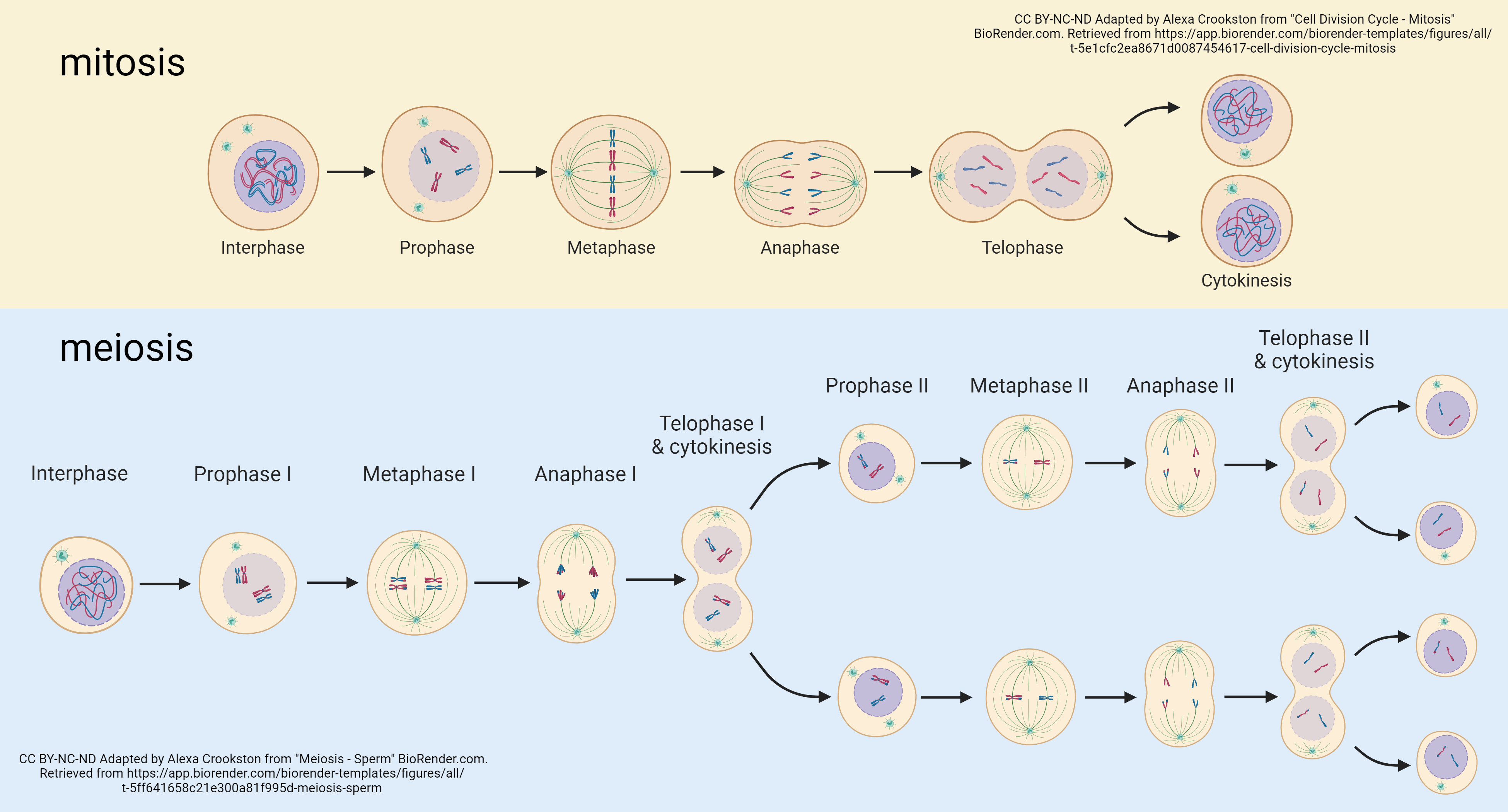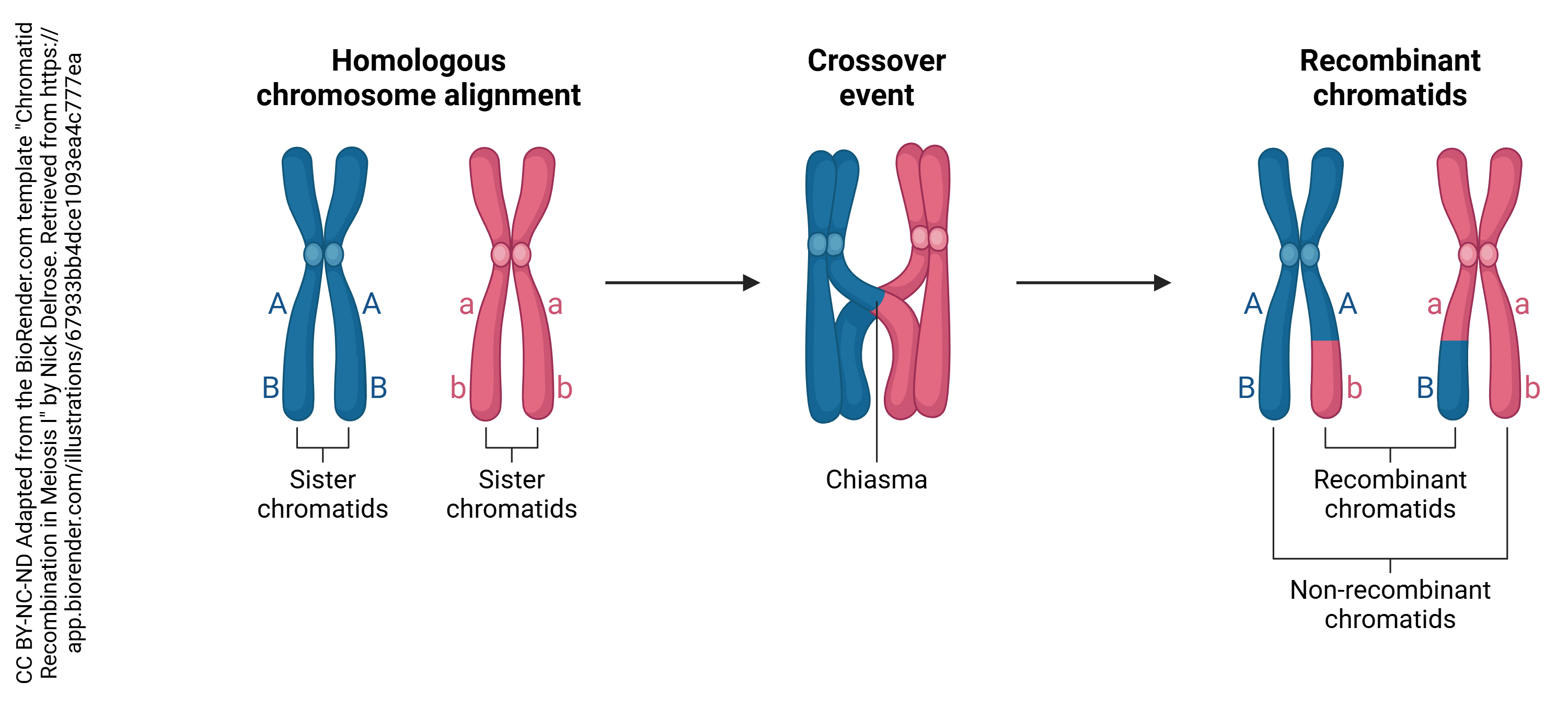Mitosis and Meiosis
Objective 6.7
6.7.1 Compare and contrast mitosis and meiosis.
6.7.2 Describe meiosis.
6.7.3 Name the cell types that undergo meiosis.

Earlier, when we examined DNA replication during S phase of the cell cycle, we mentioned that somatic (soma, “body”) cells are diploid (2N). Diploid cells carry 46 DNA molecules (46C). These cells (almost all cells in the human body) divide via mitosis, resulting in two diploid daughter cells that are genetically identical to the parent cell.
Because sperm and eggs (gametes, from the Greek words for “husband” and “wife”) combine in the process of sexual reproduction, they each carry 23 DNA molecules, half of the diploid number. That is, they are haploid, also symbolized N, or 1N (23C). Because scientists could visualize chromosomes through the microscope before they could count DNA molecules, the older literature uses N (chromosome copy number) instead of the more modern idea of C (DNA copy number).
When these two 1N germ cells join, the normal 2N number of chromosomes is restored
1N + 1N = 2N
23C + 23C = 46C
To achieve the haploid state, gametes must evenly divide up the replicated amount of DNA between gametes. Because mitosis is entirely unable to answer this need, a slightly different mechanism of cell division is needed. This is called meiosis.
In meiosis, to go from 92 total DNA molecules to 23 DNA molecules, requires two division steps, called meiosis I and meiosis II.
The diagram shows the process of meiosis in more detail and compared to mitosis. Note the same series of steps (prophase, metaphase, anaphase, telophase) in each cell division. Importantly, there is only one DNA duplication step, and it occurs before meiosis I even begins. So meiosis I begins with 92 DNA molecules and ends with 46 DNA molecules. Meiosis II beings with the same 46 DNA molecules and ends with 23 DNA molecules in each gamete.

Meiosis I differs from mitosis in another important way. In meiosis I, an event called crossing over or recombination occurs. As shown in the image, non-joined chromatids from the same region of the same chromosome “swap” and the DNA is scrambled in this way.
One problem that has occupied biologists for centuries is, given the difficulties and risks involved in sexual reproduction, why does it exist? Not all animals reproduce sexually. Darwinian theory then would suggest that there is some sort of selective advantage to sexual reproduction.
One major advantage of sex is that it provides the opportunity for crossing over during meiosis. This scrambles the genetic material so that each sibling, even in a large family, has a different complement of DNA even though they all share the same parents.
Media Attributions
- U06-040 Mitosis and Meiosis © Crookston, Alexa is licensed under a CC BY-NC-ND (Attribution NonCommercial NoDerivatives) license
- U06-041 Chromatid Recombination in Meiosis I © Delrose, Nick adapted by Jim Hutchins is licensed under a CC BY-NC-ND (Attribution NonCommercial NoDerivatives) license

